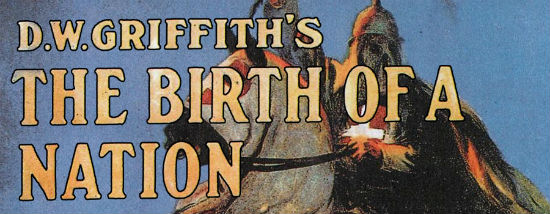Warning: The film featured in this post contains content that should be offensive to anyone and everyone regardless of age, race, or religious affiliation. It is our intention to explore the material in its historical context. We are in no way condoning the views of this film.
“‘The Birth of a Nation’ is not a bad film because it argues for evil… it is a great film that argues for evil. To understand how it does so is to learn a great deal about film, and even something about evil.”
– Roger Ebert
Much as our legacy of slavery sits as a hideous blot on our nation’s history so too does “The Birth of a Nation” sit in the history of film; unavoidable in any serious discussion of the evolution of film as an art form yet rightfully disdained for its grotesque themes. It was not the first feature length film. It was not the first film to use its sophisticated editing techniques although arguably it may have been the first to use them artfully. Its most significant attribute was that it was controversially racist even in a time when racism was much more widely accepted. That controversy brought people to the theater and brought attention to a new and growing art form. It catapulted the film beyond significance in the history of film to significance in the history of the nation itself both for better and for worse by shifting the narrative of slavery, inciting a resurgence of the Ku Klux Klan, and spurring the growth of the NAACP by providing it with its first major cause. The film remained the highest grossing for over two decades as a result of the controversy that continues to bring attention to the work today.
As we come to the close of the first term of our first African-American President and prepare to possibly re-elect him it seems an opportune time to reexamine this film. Many point to that milestone of our first African-American President as the end of racism but to do so is to exhibit a juvenile understanding of what racism is. Racism is systematic and so pervasive that it infiltrates our very way of thinking. D.W. Griffith didn’t view himself as a racist or “anti-negro.” In what are credited as his own words “To say that is like saying I am against children, as they were our children, whom we loved and cared for all of our lives.” He lived in a time and place when the views illustrated in this film were accepted by many as facts of life. That time and place was not nearly as long ago nor as far away as some might wish to believe. It’s important to remember that and to understand the implications so that we might continue to learn and grow from it.
A clearer version of the film that includes limited commercials can be found here.
[Image]
